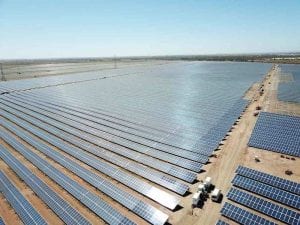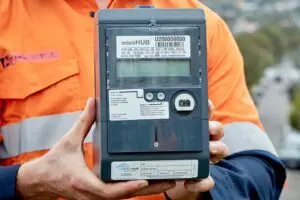A new report has revealed that deep-seated flaws in Australian electricity network regulation have delivered billions of dollars worth of “supernormal” profits to poles and wires companies, at the expense of consumers and to the detriment of the transition to renewables.
The Institute for Energy Economics and Financial Analysis (IEEFA) report, based on 2021 data released by the Australian Energy Regulator, finds that distribution and transmission network service businesses have consistently been charging electricity consumers too much over the past eight years.
And not just by a little – the data reveals that profits for these companies have been averaging at 67% higher than what the regulator had considered necessary to ensure a reliable service.

That is, the current regulatory system, which is managed by energy market bodies including the AER and the Australian Energy Market Commission, consistently overestimated the actual costs that network businesses would require to build, operate and maintain the network.

Networks then charged those overestimated costs to consumers – via retailers – and shareholders retained the differences between the networks’ revenue and cost.

This has seen consumers on Australia’s National Electricity Market (NEM) get charged a whopping $10 billion more for electricity network services than they should have between 2014 and 2021 – or roughly $800-$1200 per customer, depending on the state (excluding the ACT).

And the practice was rife: the report finds that of the 18 network service providers analysed in the report – including the likes of United Energy, Endeavour, SA Power Networks and AusNet – 14 extracted profit above IEEFA’s expected profit multiple range, with most of the supernormal profits likely going to offshore owners.
The findings come as consumer electricity bills are forecast to increase even further over the coming 18 months as as high coal and gas prices continue to drive up Australia’s domestic wholesale energy prices.
And they come as state and federal governments alongside regulators and network companies weigh up the potentially enormous costs of building out major new electricity transmission infrastructure to accommodate the increasingly urgent shift to renewables.
As the author of the report, Simon Orme, points out, the Australian Energy Market Operator’s 2022 Integrated System Plan puts the cost the new transmission investment necessary for the energy transition at $12.7 billion in its optimal development path.
Meanwhile, energy consumers in the national electricity market have paid almost that same amount – around $1.2 billion more than necessary each year over the last eight years – just to have a stable electricity supply.
“The $10 billion in super profits extracted by electricity networks over 2014-2021 is approaching the capital cost of AEMO-identified regulated transmission projects necessary to support the closure of most coal-fired power generation,” Orme said on Wednesday.
“Australia’s energy customers have been spinning golden silk for network providers for nearly a decade. They can’t be expected to fund super profits any longer. The extra burden must be removed.”
The report lays the blame for this “extra burden” with weak laws and rules regulating networks and a lack of transparency over the extent of monopoly profits – an especially disappointing outcome considering the push for tighter regulation during the 2010s when network gold-plating was rife.
Gold-plating, or significant unnecessary investment in grid assets whose costs are then recouped via higher bills for consumers, was a recurring blight on the Australian energy market for the better part of the past two decades.
A report by The Australia Institute in 2017 found that “gold-plating” by Australia’s privatised electricity networks had been a key driver of an almost 200 per cent rise in electricity prices over 20 years, pushing up power prices at almost three times the rate of the national consumer price index.
A year later, then chair of the Australian Competition and Consumer Commission, Rod Sims, warned that Australia’s obsession with “reliability” of electricity generation was leading to a repeat of this sort of energy asset gold-plating.
“This is another fail that has adversely affected the overall productivity of the sector,” said IEEFA’s Orme this week.
“And any assumption that those supernormal profits are being reinvested in higher levels of regulated capital investment is wrong. Instead, they go to shareholders.
“This means that crucial financial resources that could fund investment in the energy transition are being diverted by wealth transfers from consumers to network shareholders, many of whom are overseas. This delays and raises the cost of the energy transformation.
“If this situation is not improved, energy consumers will continue to pay more than required for electricity distribution and transmission network services, and up to 43% more for new assets into the future, increasing the cost of the energy transition and deterring investment in low carbon generation.”
IEEFA says the excessive bias in favour of network shareholders over consumers reflects weaknesses in the National Electricity Law (NEL), especially the revenue and pricing principles.
The report notes that the NEL does not require networks to report on the presence of supernormal profits and does not require profits to be comparable with regulatory and market risks faced by networks.
Correcting regulatory failure, it says, will require a substantial program of reform including monitoring and reporting on supernormal profits, changes to the NEL and Rules to reduce supernormal profits, improving consumer representation in regulatory processes and ensuring frameworks for future investment are efficient.
“The Australian Energy Regulator is responsible for making sure networks charge consumers only what is required to cover the costs of investing in, building, maintaining and operating the networks, plus a reasonable profit to ensure compensation for investors,” Orme says.
“That network providers in Queensland, New South Wales, Victoria, South Australia and Tasmania have gained super profits by persistently charging too much, resulting in overall retail electricity prices being higher than necessary, is a fact Energy Ministers championing lower electricity prices may have been unaware of.
“Now that they are aware, the federal government should establish an independent commission of inquiry into the economic regulation of networks, working together with participating NEM jurisdictions.
“The commission of inquiry should work to increase the reporting and monitoring of network business’ profits, make changes to the rules and laws to improve economic regulation of networks, remove barriers to consumer representation in economic regulation processes and ensure frameworks for future investment are efficient.”
“Improving the regulations governing monopoly electricity networks in Australia will help constrain network supernormal profits and reduce the strong upward pressure on consumer bills.










